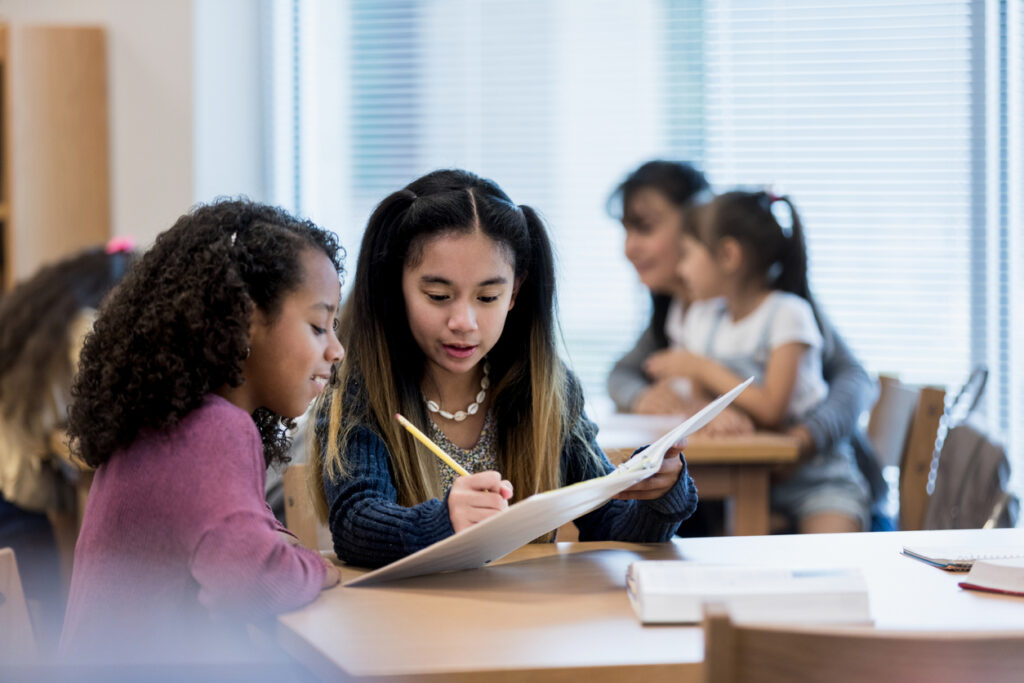By Bryan Goodwin
By some estimates, students fell many months behind in their learning during the pandemic. And National Assessment of Education Progress (NAEP) scores and ACT scores have fallen for the first time in decades. As a result, lots of educators across the U.S. are now feeling pressure to catch students up as quickly as possible.
Meanwhile, some teachers report that many of their students have returned to school physically, but not mentally—they’re disengaged and disconnected. No wonder then teachers themselves are burned out, with vast swaths of them contemplating leaving the profession.
It’s a bleak picture. And yet … there’s cause for hope, specifically this: We now have greater insights into the inner workings of the brain and effective teaching than at any time in human history.
For too long, as cognitive scientist John Medina notes in his book Brain Rules, we’ve subjected students to learning experiences that are “directly opposed to what the brain [is] good at doing.” Not surprisingly, learning often feels like such a chore (and bore) for students—they forget as much as 90 percent of what they learn in classrooms within 30 days, according to Medina.
It doesn’t have to be that way. All students (and human beings) are natural born learners. Students’ brains are actually amazingly adept at learning—especially when they encounter conditions that reflect how their brains are meant to learn.
Here at McREL, we’ve distilled decades of research in the science of learning into a six-phase model of instruction featured in the book Learning that Sticks. This model helps educators tap into their students’ natural propensity to absorb and retain new information with learning experiences that are both engaging and effective. The six phases are:
- Become interested
- Commit to learning
- Focus on new learning
- Make sense of learning
- Practice and reflect
- Extend and apply
More recently, we pored over more than 100 scientific studies in classrooms with diverse learners and identified 14 teaching strategies that map onto these six phases of learning, which we report in The New Classroom Instruction that Works. The 14 strategies include:
- Cognitive interest cues
- Student goal setting and monitoring
- Vocabulary instruction
- Strategy instruction and modeling
- Visualizations and concrete examples
- High-level questions and student explanations
- Guided initial application with formative feedback
- Peer-assisted consolidation of learning
- Retrieval practice (quizzing to remember)
- Spaced, mixed practice
- Targeted support (scaffolded practice)
- Cognitive writing
- Guided investigations
- Structured problem solving
The result? A robust set of practical, proven classroom strategies that make learning easier and more joyful for students. Perhaps most important, this new book provides educators with a clear and useful definition for best first instruction. It also demonstrates the real benefit of focusing on best first instruction. Namely, it helps educators work smarter, not harder.
The studies we examined all employed experimental designs to demonstrate the effects of using specific teaching practices versus business-as-usual or regular classroom instruction. The effects sizes of these 14 strategies, as shown on the chart, were tremendous—often the equivalent of several months of learning gains.
Consider that for a moment. That means if we want to catch students up from interrupted learning, we could do worse than start with ensuring more consistent and intentional application of best first instruction. After all, if we simply double down on bad practice—subjecting students to less-than-optimal teaching during afterschool or summer school programs, we’re just doing more of the same, yet expecting different results.
In fact, cognitive scientists have long cautioned that “fast learning” leads to “fast forgetting.” So, instead of rushing to “accelerate learning” (and forgetting), our students will benefit more from teachers employing the go-slow-to-go-fast principles of best first instruction.

In short, best first instruction helps to ensure that teachers don’t work harder than their students.
That’s the real promise of best first instruction: We needn’t exhaust teachers or students to catch them up. Nor do we need to race through the curriculum, which further disengages students and burns out teachers. Rather, we need to design and deliver student learning experiences that reflect how our students’ brains actually work—how they actually retain information, not just for 30 days, but a lifetime. If we do that well, we can make learning easier and more joyful for teachers and students alike.
In subsequent blog posts in this series, we’ll take a deeper dive into each of these 14 straightforward strategies, many of which probably are familiar to you. You’re likely already using some, or all, of them in your classroom. Yet because all of them are all so powerful, using each strategy more effectively, intentionally, and consistently in your classroom will deliver tangible benefits for your students—making their learning (and your life) easier.



